Thomas Wintle
CGTN
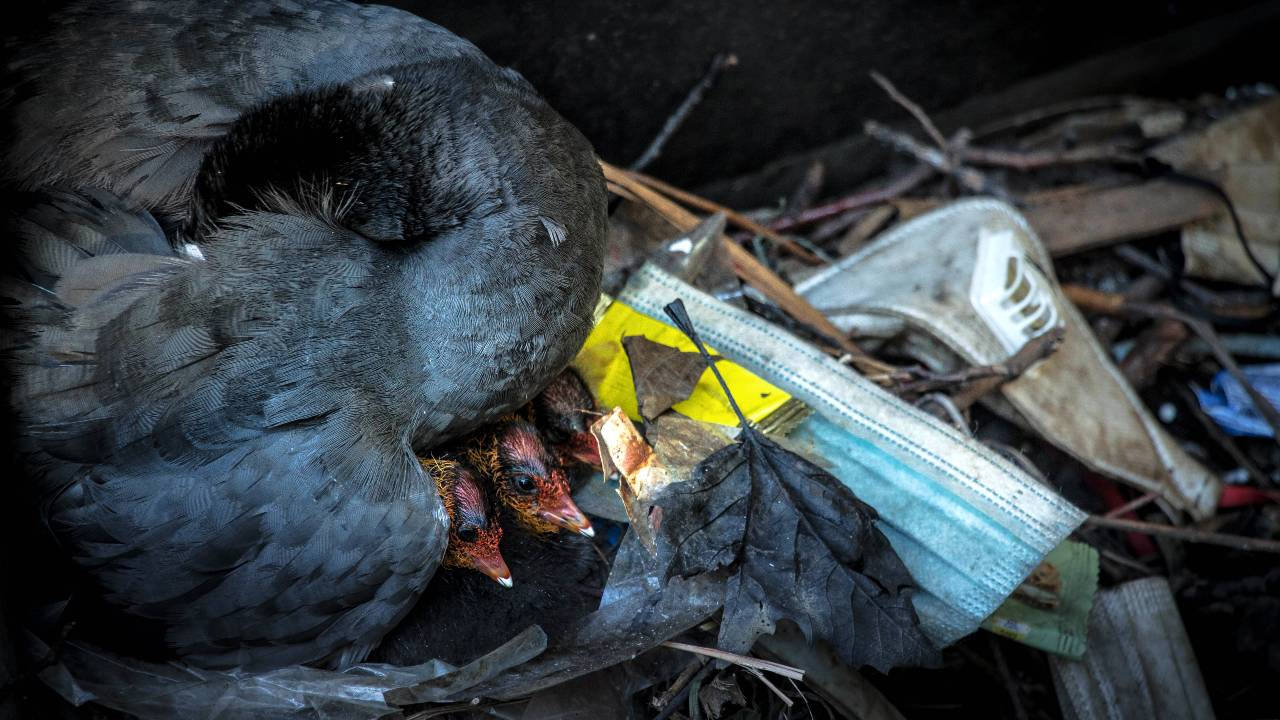
A new study looks at the global impact of face masks and gloves on wildlife during the COVID-19 pandemic. /Declan Friel
The face masks that protected us during COVID-19 are proving to be a lethal threat to wildlife, according to a new study about the environmental impact of protective equipment during the pandemic.
Much of the Western world has cut down on personal protective equipment (PPE) in recent months. However, the billions of face masks and gloves produced amid coronavirus have created an "emerging type of litter category" that, according to the report, could negatively impact animals for centuries to come.
The study, published in The Science of Total Environment, uses global community science observations to assess the damage of PPE pollution on birds and other wildlife.
One of the most serious threats it cites is from entanglement, with some animals being killed after getting caught in the plastic debris, the majority of which were birds. However, bats, crabs, hedgehogs and a variety of other wildlife were also affected by masks and gloves.
"What's really bad about face masks is the fact that they're almost the perfect trap for an animal to get tangled up in," Justine Ammendolia, the report's lead writer, tells CGTN Europe.
"You have these elastic loops on either side that act almost like a booby trap, or a perfect little noose. And unfortunately, we started seeing cases of animals dying from hanging by face masks from trees."

A new study looks at the global impact of face masks and gloves on wildlife during the COVID-19 pandemic. /Declan Friel
The face masks that protected us during COVID-19 are proving to be a lethal threat to wildlife, according to a new study about the environmental impact of protective equipment during the pandemic.
Much of the Western world has cut down on personal protective equipment (PPE) in recent months. However, the billions of face masks and gloves produced amid coronavirus have created an "emerging type of litter category" that, according to the report, could negatively impact animals for centuries to come.
The study, published in The Science of Total Environment, uses global community science observations to assess the damage of PPE pollution on birds and other wildlife.
One of the most serious threats it cites is from entanglement, with some animals being killed after getting caught in the plastic debris, the majority of which were birds. However, bats, crabs, hedgehogs and a variety of other wildlife were also affected by masks and gloves.
"What's really bad about face masks is the fact that they're almost the perfect trap for an animal to get tangled up in," Justine Ammendolia, the report's lead writer, tells CGTN Europe.
"You have these elastic loops on either side that act almost like a booby trap, or a perfect little noose. And unfortunately, we started seeing cases of animals dying from hanging by face masks from trees."
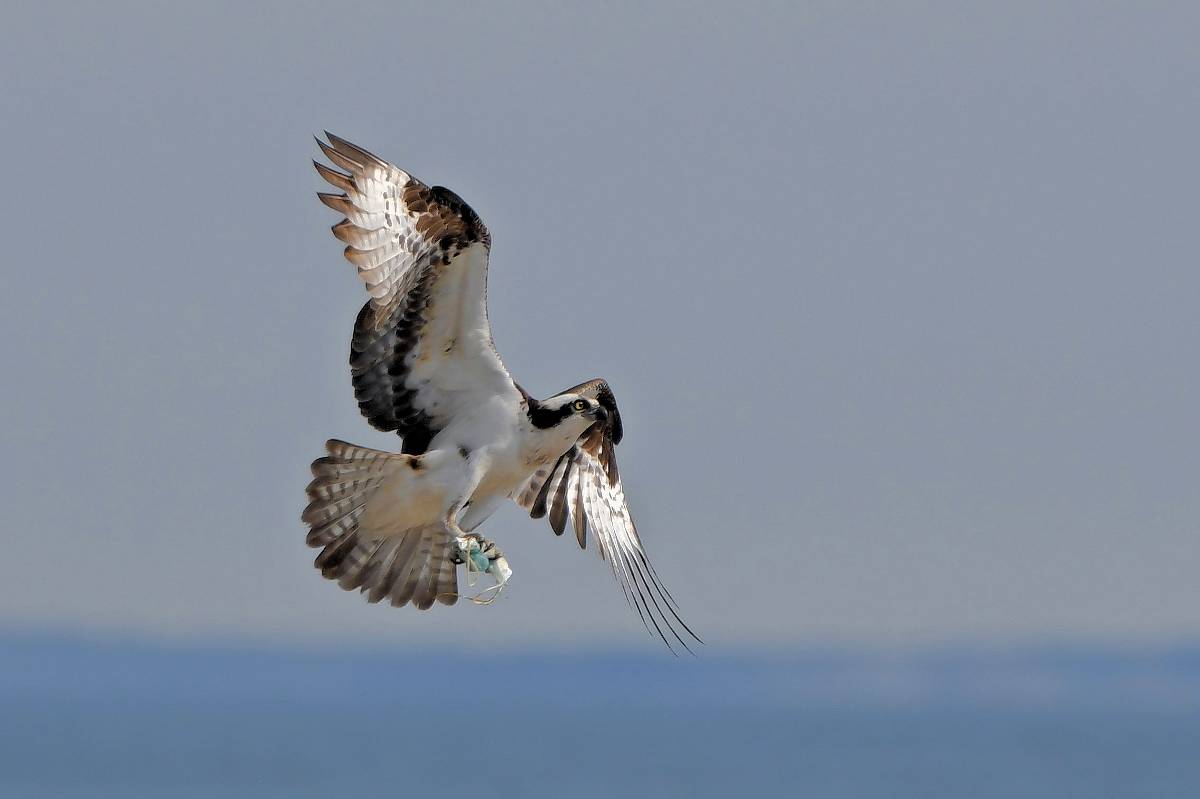
One of the most common sightings in the report was birds getting entangled in masks and gloves, such as this Osprey in the U.S. /Monica Hawse
Global impact
At the height of the pandemic, global demand for face masks hit over 129 billion per month. The consequent number of abandoned masks increased 80-fold between March to October 2020, making up almost 1 percent of all abandoned litter around the world.
The report cites cases of animals interacting with PPE in 23 different countries, which Ammendolia says, despite being a dramatic understatement of the real number, goes to show how extensive the problem was.
"It wasn't just happening in North America or Europe," she says. "It was literally happening all over the world."

There were many reports in the study of birds dying after becoming entangled in discarded PPE, such as this rare razorbill in Scotland. /Trish Loli Brewster
Taking advantage of the importance of digital life during the pandemic, the researchers mined the data from Internet reports between April 2020 and December 2021, relying on social media, reports from colleagues, and records from the global citizen science database 'Birds and Debris', where wildlife enthusiasts can upload photos of such incidents.
"We were really interested in understanding how all that extra plastic that we were using in our daily life, how that was actually coming into play with our wildlife - not only around our cities, but in forests and different natural areas," says Ammendolia.
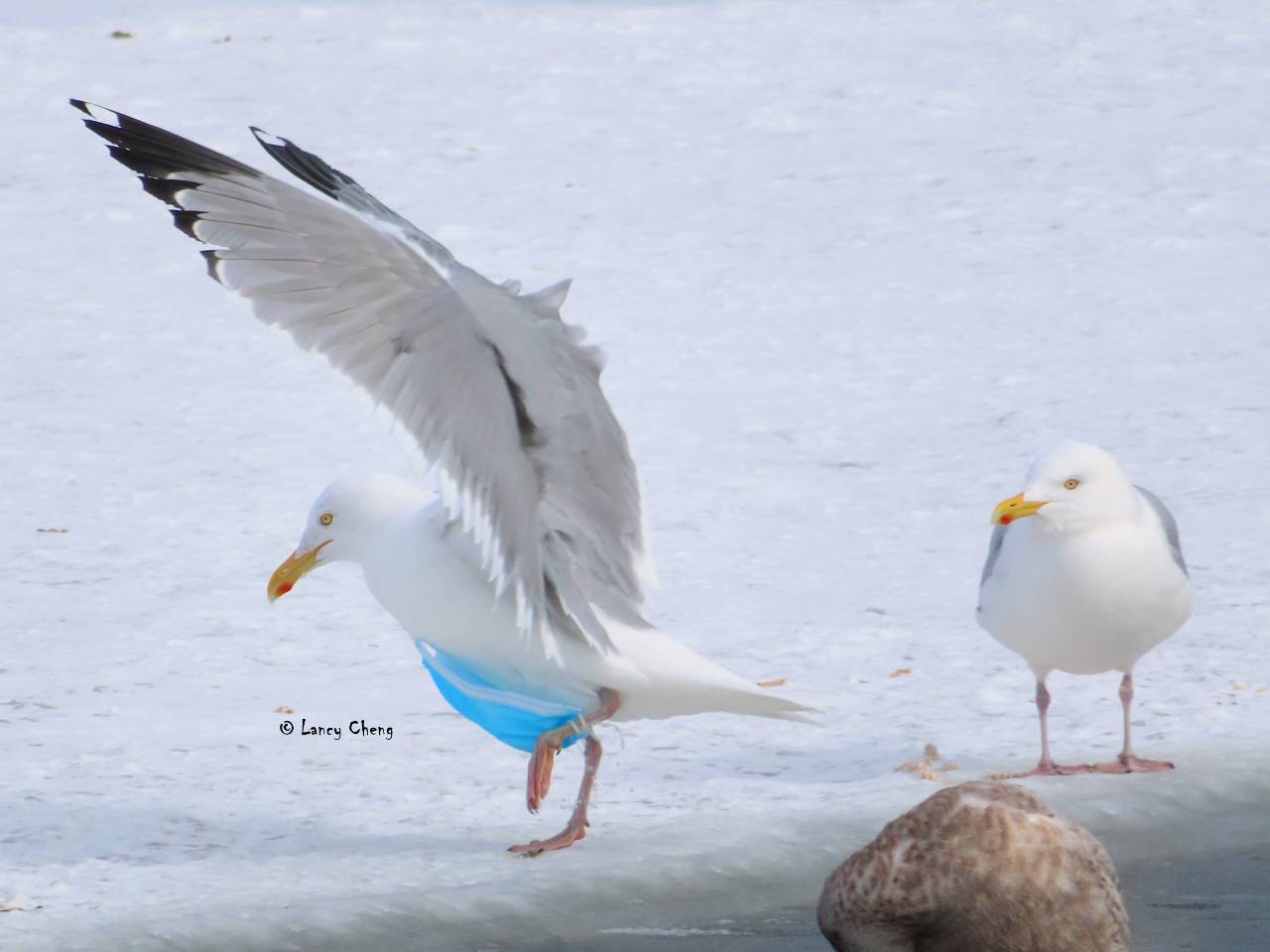
The report collected 114 unique sightings of animals interacting with waste PPE in 22 different countries. /Lancy Cheng
In one of the first studies of its kind to use social media to extract biologically relevant images of PPE pollution, the researchers found 114 unique sightings of wildlife interactions around the world, a significant increase from 38 in 2020 when the database was first started.
Only using English-language search engines, Ammendolia adds that the real number of incidents is likely to be significantly higher.
"Every country has their own platform and unfortunately, we weren't able to incorporate China and Asia because they tend to use WeChat and a lot of their own social platforms," she says.
"The fact that we were searching in English obviously limits how much we were able to detect, so there were a number of downfalls with that study, but generally speaking, this is more than anyone's done before."
Tangled up
The report also confirms the findings of other earlier studies on the same topic, with the data suggesting the majority of incidents with PPE - 83 percent - involved birds. However, more than 10 percent of other sightings included mammals.
Most of the sightings were related to wildlife getting tangled up in the masks and gloves or incorporating them into their nests.
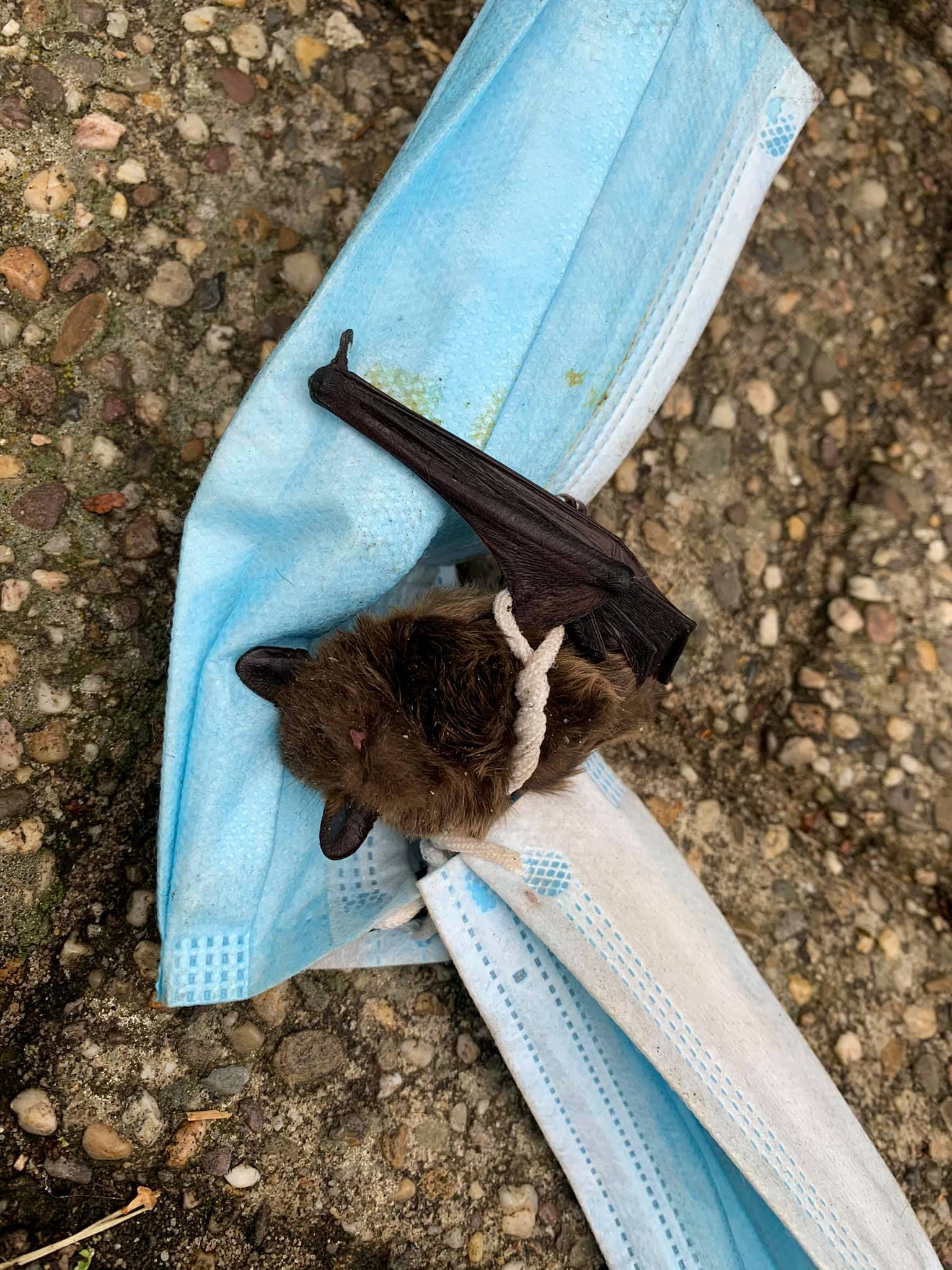
The report also collected sightings of bats, crabs, hedgehogs and a variety of other wildlife interacting with PPE. /Mirjam van Otterlo
While it may appear a novel sight specific to the pandemic, Ammendolia points out that birds have been using plastic to build their homes since the material's invention.
"But the fact that face masks were adopted that quickly after everyone started using them just goes to show how resourceful these animals are in finding nesting material," she says.
However, she adds that very early into the pandemic, it was clear that animals using PPE for such purposes was proving to be fatal.
"One of the first observations reported from Canada... was a robin suspended from a tree," she says. "That only happened two months after the pandemic was declared."
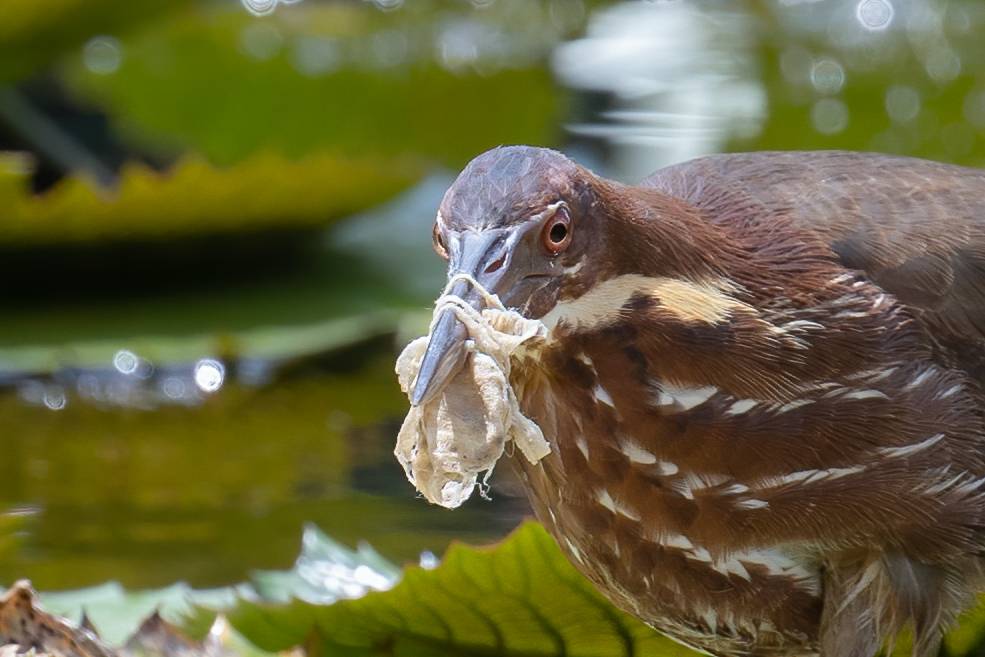
The majority of incidents of animals interacting with PPE in the while - 83 percent - involved birds. /Adrian Silas Tay
She adds that while the phenomena of animals adapting so quickly to their surroundings may be intriguing, it's essentially a morbid fascination.
"This isn't something we want to see, especially with the amount of the number of endangered birds there are out there. And the fact that you're introducing plastics that could be very dangerous for their chicks," she adds.
Emotional toll
With disposable face masks estimated to take up to 450 years to decompose, the researchers say they hope the report will highlight the "systemic problem" that has caused so much plastic pollution to contaminate the environment.
Ammendolia says she hopes to continue to the work and build their database further, with the researchers calling for more work to develop better community science platforms to help people from all walks of life to help cut PPE pollution.
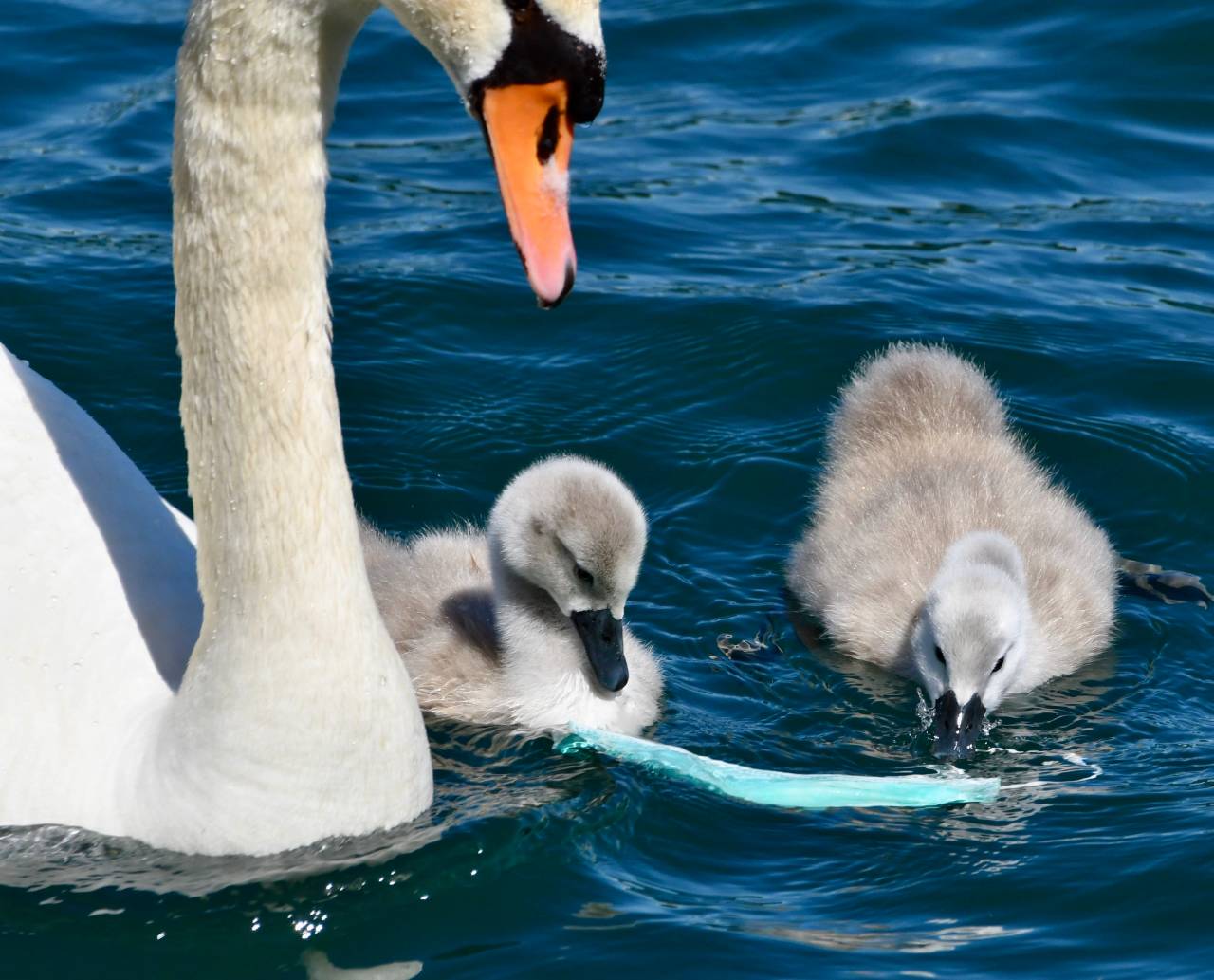
Researchers involved in the project say looking at the pictures of animals struggling due to PPE pollution takes a personal toll. /Paolo Nicolai
However, the project has taken a personal toll on Ammendolia and her colleagues.
"Having this kind of responsibility in terms of looking at image after image of very sad content does take a toll on you, and there is a certain amount of grief involved with it," she says.
"This isn't fun because you're watching animals die horrible deaths that are totally unnecessary," she adds. "Although the study was very important to get out, to continue this kind of work would take a lot of emotional labor."
The thing that keeps her going is the potential impact the work could have on saving animals from the growing threat of PPE pollution.
"Just making sure that all of us use these images, and really turn that sadness and grief into action, is very critical," she says.
No comments:
Post a Comment